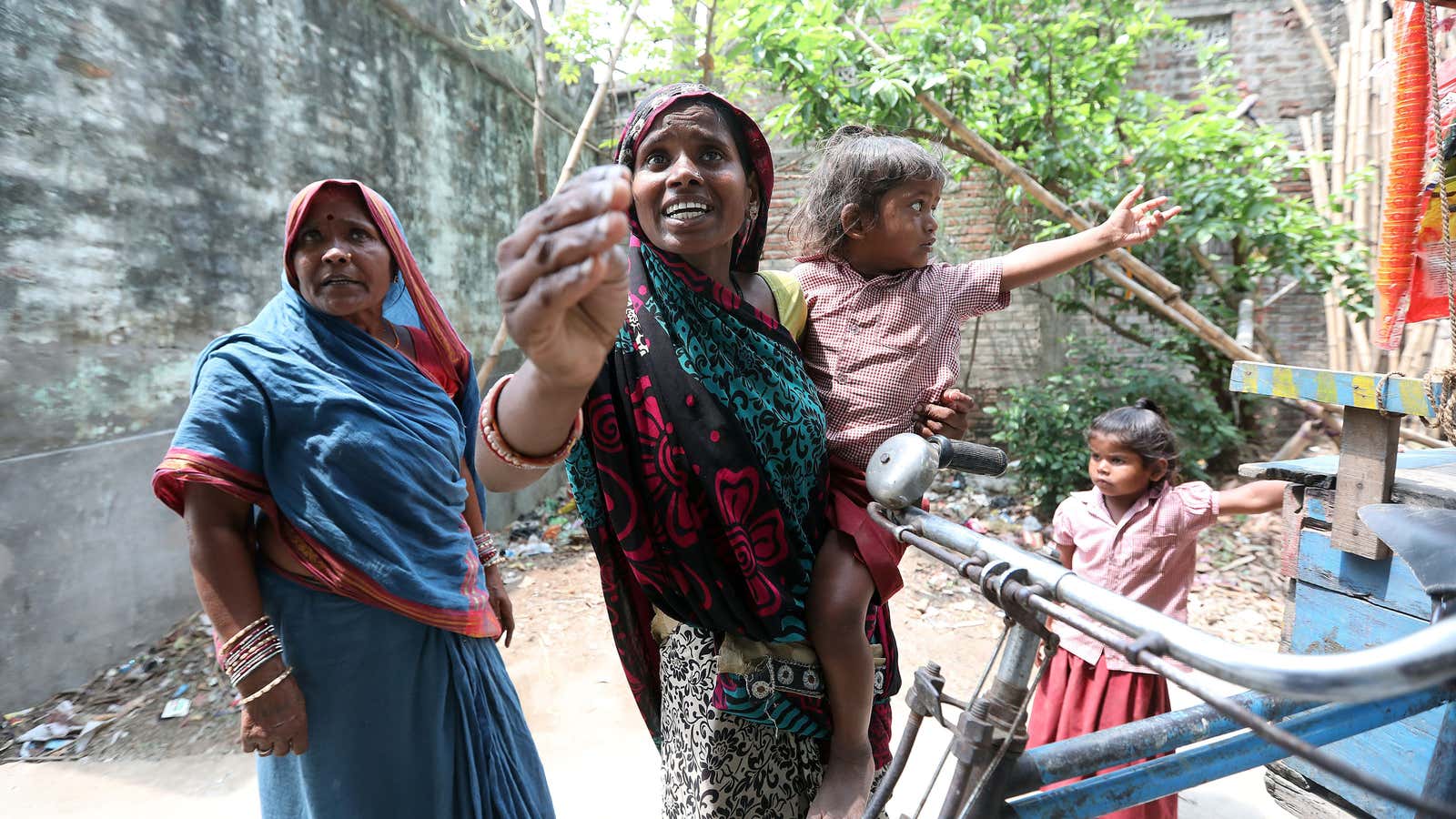The burden of poverty weighs down heavier on girls and women in India than it does on the opposite sex.
An Oxfam report on inequality published yesterday (Jan. 21) revealed that in the workplace, women still receive 34% less wages than their male counterparts for the same work.
And as you go further down the social ladder, things get worse.
“When governments reduce their expenditures on essential public services such as education and healthcare, women and girls are the first ones to lose out on these services,” according to the report.
Girl children from the lower strata of society are lucky to see a classroom at all. In India, girls belonging to families in the top 20% get nine years of education on average, while girls from families in the bottom 20% get none at all. Even those who make it to school are often pulled out when money is tight, the report said. In addition, more than 23 million girls drop out of school annually because of a lack of toilets in school and proper menstrual hygiene management facilities.
Then, because social norms subject women to domesticity, they often have to stay home and look after the young and the elderly.
Women in India spend around five hours a day on unpaid care work while men devote a mere half an hour on average. “This disproportionate burden of unpaid care work by women means they lose out on opportunities to participate in paid labour or are forced to undertake paid labour leading to their time poverty and loss in well-being,” the report said.
This imbalanced system leaves women vulnerable. A survey of 1,000 households across the central-Indian states of Bihar, Jharkhand, Chhattisgarh, and Uttar Pradesh last year revealed that people thought it was acceptable to criticise and beat women if they slipped up while carrying out unpaid care work. In turn, violence continuously sets women back economically. It’s a vicious cycle.
Further up the social ladder, the inequality still persists. Even in India’s elite club of three-comma fortunes, women make a blink-and-miss appearance. “There are only nine women billionaires in the list, constituting just 7.5% of the Indian billionaires,” the report said.
